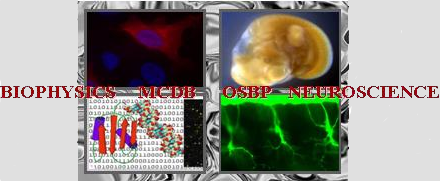Poster abstracts
Poster number 82 submitted by Micaiah McNabb
Small-conductance Ca2+-activated K+ channel, SK2, is the final missing component of astrocytic passive K+ conductance
Micaiah McNabb (Neuroscience Graduate Program), Yixing Du (Department of Neurosciences, University of California San Diego), Angela Li (Department of Neuroscience, The Ohio State University), Susma Timsina (Neuroscience Graduate Program), Min Zhou (Department of Neuroscience, The Ohio State University)
Abstract:
Across various brain regions and model species, astrocytes exhibit a characteristic ohmic, or “passive”, K+ conductance. However, the full repertoire of leak-type K+ channels contributing to this intrinsic property of functionally mature astrocytes remains elusive. Inward-rectifying K+ channels, such as Kir4.1, have been shown to contribute to the passive K+ conductance. The activation kinetics of Kir channels, however, cannot entirely account for the observed ohmic behavior, specifically the outward-going portion of the passive K+ conductance. Therefore, an additional leak-type K+ channel must be present to account for this unidentified portion of astrocytic K+ conductance. In single astrocytes collected from the hippocampal CA1 region, our quantitative PCR (qPCR) analysis revealed a high level of mRNA expression from small-conductance Ca2+-activated K+ channel, SK2. Accordingly, apamin, a highly selective blocker for SK channels, disclosed a significant portion of apamin-sensitive K+ currents from hippocampal astrocytes decoupled with meclofenamic acid (MFA), a potent gap junction blocker. Specifically, five-minute bath application of 300 nM apamin resulted in near-ohmic suppression of passive conductance and membrane depolarization. Co-application of 300 nM apamin and 0.1 mM BaCl2, a selective Kir channel blocker, resulted in a further reduction of passive conductance, and a significant increase in input resistance. Complete elimination of leak-type K+ conductance was further comfirmed by the separation of the capacitance discharge from the newly emerging voltage-gated outward transient (IKa) and delayed rectifying (IKd) K+ conductances as a result of improved voltage-clamp quality. Therefore, our results support the involvement of an SK channel, likely SK2, as the molecular identity of the long-sought K+ channel working in concert with Kir4.1 to generate the full range of astrocytic passive K+ conductance.
Keywords: Astrocytes, Electrophysiology, Potassium
